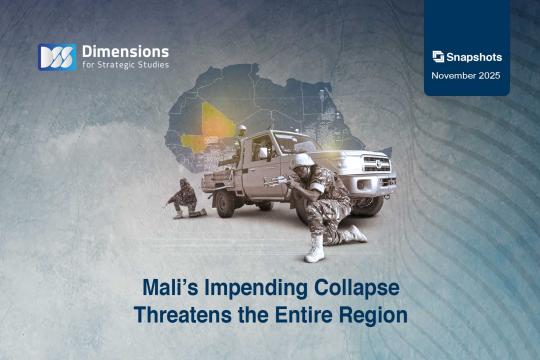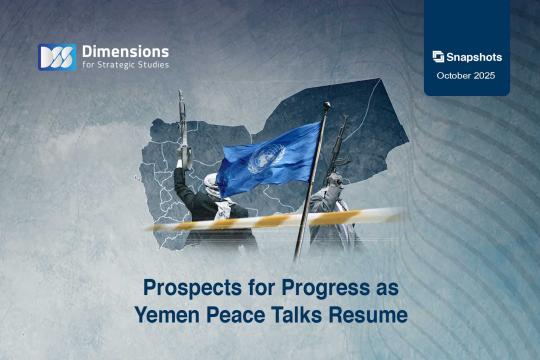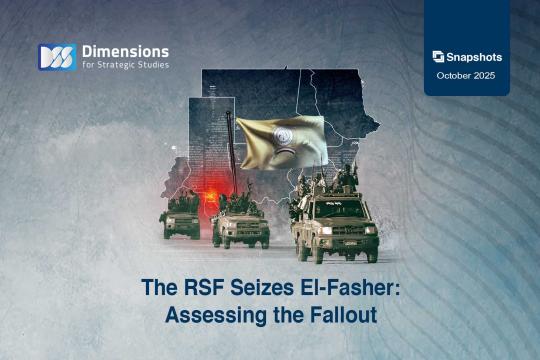
Haniyeh’s Killing Tests Iran’s President on Day One
2024-08-143772 view
On his very first day in office, Iran’s President Masoud Pezeshkian faced a towering crisis: the assassination of Ismail Haniyeh in the heart of Tehran, which the head of the political bureau of Hamas was visiting to take part in Pezeshkian’s inauguration.
The new Iranian president had intended to start his reign by seeking dialogue with Europe, a steppingstone towards an understanding with the United States that could free his country from the sanctions regime—at least, that was what he had pledged during his brief election campaign.
However, the region-wide conflict underway forced him to prioritize the same sensitive challenge that his predecessor, Ebrahim Raisi, had faced in April, albeit in different circumstances. Given all parties’ obsessive fear of an all-out war in the region, Pezeshkian’s quest for dialogue with the West is likely to be a losing bet given his country’s involvement, under Supreme Leader Ali Khamenei’s leadership, in a regional maelstrom.
Iranian Decision-Making and Tension with Washington
Haniyeh’s killing in the heart of Tehran, at a site protected by the Iranian Revolutionary Guard Corps (IRGC) and on day one of Pezeshkian’s tenure, provided an example of how Iran’s various decision-making and policy centers operate.
The massive security breach initially sparked confusion, but Khamenei soon set the tone of Tehran’s response, saying on X: “Following this bitter, tragic event which has taken place within the borders of the Islamic Republic, it is our duty to take revenge.” Even before the Supreme Leader’s statement, his president had vowed that “Tehran will make the terrorist occupiers regret their cowardly act.”
By contrast, however, First Vice President Mohammad Reza Aref (who held the same position under reformist president Mohammad Khatami from 2001 to 2005), said that “Tehran has no intention of escalating the conflict in the Middle East.”
While Khamenei, Leader of the Revolution and Wali e-Faqih (the Guardian Jurist), is the supreme decision-maker in the Islamic Republic, in practice decision-making is shared between his office and that of the presidency, with executive tools in the form of the IRGC’s Quds Force, followed by the Foreign Ministry.
Given the backdrop of particularly high tensions with Tehran’s perennial adversary Washington, the American factor cannot be overlooked when it comes to explaining why Pezeshkian’s candidacy was accepted, and he was able to rise to the presidency.
As one of his acquaintances said—noting that the president still wears a Revolutionary Guard uniform he wore when leading a medical unit during the Iraq-Iran war—Pezeshkian is “a son of the revolution and loyal to its line, but his moderate image is suitable at this stage.”
A French former diplomat who served in Tehran said his arrival represents “the implementation of a shrewd plan by Khamenei to allow an obscure figure like Masoud Pezeshkian to contest and win the presidential elections, in order to re-legitimize the regime without giving up any power,” as well as pre-empting U.S. elections.
This strategy was aimed at expanding Tehran’s margin of maneuver, rather than bringing to office a hardline figure like Saeed Jalili, who is subject to international sanctions and struggles to undertake diplomatic initiatives. Notably, Pezeshkian enlisted Mohammad Javad Zarif, a former foreign minister and architect of the 2015 nuclear deal, as the centerpiece of his own election campaign. He later appointed the veteran diplomat as his Assistant for Strategic Affairs, tasking him with monitoring important national and international developments as well as Iran’s success in achieving the goals of its constitution. The impact of Zarif’s rather vague brief will depend one his relationship with the Supreme Leader’s office, and will be contingent on Khamenei’s approval of any greater openness.
At his inauguration ceremony, just prior to the third in a string of high-profile, suspected Israeli assassinations from Beirut to Tehran, Pezeshkian had emphasized his commitment to Khamenei’s approach, vowing to work for a strong Iran and “defend the country’s dignity internationally.”
Yet the new president will not be the final decision-maker in foreign policy, meaning his margin of maneuver will be limited when it comes to the difficult task of restoring trust with Europe and overcoming the obstacles posed by the regional drama underway in the Middle East, in which his country is deeply implicated—not to mention the rapidly approaching U.S. presidential elections, in which the return of Donald Trump to the White House cannot be ruled out.
Scenarios for an Iranian-Israeli Confrontation
Just as in the lead-up to April’s carefully calibrated, limited confrontation, the Middle East is once again on a knife-edge in anticipation of coordinated strikes by Iran and its allies, designed to inflict more pain on Israel than the previous round. Tensions were further heightened by reports on July 31, that Khamenei had ordered a direct strike on Israel in response to Haniyeh’s assassination.
Unlike last time, the strikes are unlikely to be announced—a strategic shift Tehran sees as necessary given Israel’s crossing of its own red lines and the collapse of the balance of deterrence, as well as the damaged morale of Iranians and that of Hezbollah after the killings, days apart, of Haniyeh, Hamas military chief Muhammad Deif, and Hezbollah military commander Fuad Shukr.
Thus, any retaliation is likely to be in the form of a well-aimed blow by Iran, Hezbollah, Hamas, Iraqi Shiite militias, and Yemen’s Houthis, in a coordinated, simultaneous response by both regular forces and militias. What follows will depend on the Israeli response and whether it stays within the ceiling imposed by the Biden administration in its efforts to avoid an all-out regional war.
However, Israeli Prime Minister Benjamin Netanyahu is well used to breaking his promises to Washington, and is pursuing a plan of escalation that links his political path and his future to what he considers an existential war that will determine Israel’s fate. Thus, Israel’s behavior will take American calculations into account, without fully respecting them.
As for Iran, it will carefully choose the timing and target for its attacks, hoping to restore the balance of deterrence with Israel without compromising its quest to reset its relationship with Washington and continue in its historical endeavor to be an influential regional power in the Middle East and across the Islamic world.
For its part, Israel’s main defender the U.S. remains keen not to sabotage its own efforts to fix its relationship with Iran and change the regime’s behavior.
However, the bets on both sides may be unrealizable, because Tehran is not willing to limit its regional gains, change its hardline behavior, or refrain from completing its nuclear program, which it considers a guarantee of the future survival of its regime.
If Iran limits its response to a restrained attack as it did in April, it will do so in order to preserve its gains and avoid burning bridges with Washington, as well as to avoid a strike against its nuclear program and to protect its most important regional pillar, Hezbollah.
As for the lame duck administration of U.S. President Joe Biden, it may not be capable of the kind of delicate engineering it pulled off in the Spring.
All of this presents the new Iranian administration with its first delicate, difficult regional test.





